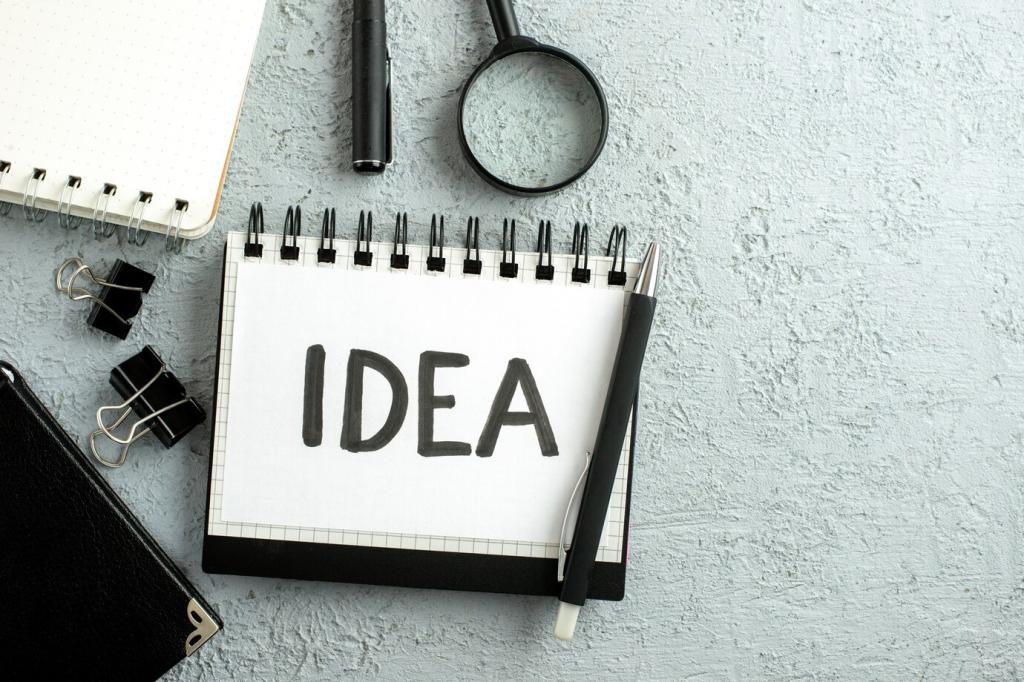Crafting Compelling Copy for Furniture Sales
Know the Room: Understanding Furniture Buyers
Emotional Anchors That Move the Needle
Comfort, pride, and belonging sell furniture more reliably than any technical spec. Frame your copy around evenings together, easy Sunday mornings, or a workspace that finally feels calm. Ask readers to imagine hosting friends, stretching out after a long day, or finding a chair that actually supports their goals. Then invite comments about what feeling they want most.
Voice and Tone That Fit the Finish
Match your voice to the product’s personality. Sleek metal legs and tight lines call for crisp, modern phrasing. Hand-rubbed oak begs for warm, patient storytelling. Keep adjectives purposeful, verbs dynamic, and rhythm readable. Share which tones resonate with your audience in a quick reply, and we’ll swap examples in next week’s newsletter.
Persona Snapshot: The Host, The Nester, The Minimalist
The Host wants expandable tables and chairs that stack neatly. The Nester craves plush, stain-resistant fabrics and cozy corners. The Minimalist values clean silhouettes with honest materials. Write a paragraph to each persona before drafting product copy. If you want a printable persona worksheet, subscribe and tell us which persona describes your favorite customer.
Start With a Scene, Not a Spec
Open your description with an everyday moment. Steam curls from a mug on the coffee table; socks find a place to land on the ottoman. Then slip in details: kiln-dried frames, resilient foam, dovetail joints. Scene first, spec second. Share your best opening line with us, and we’ll feature reader favorites in a future post.
Material Truths, Human Benefits
Translate materials into outcomes people feel. Oak becomes heirloom-level stability. Performance fabric becomes worry-free spaghetti night. High-density foam becomes support that doesn’t collapse by November. Use one sentence per benefit, anchored by a simple verb. Comment with a tricky feature you struggle to translate, and we’ll craft benefit lines together.
A Living Room Before-and-After, In Words
Before: a room that echoes, a couch that sags, coasters nobody uses. After: a sectional that swallows the whole movie night and a rug that hushes the space. No construction, just careful choices. Want a template for writing before-and-after stories that convert? Subscribe and we’ll send a guided worksheet.

Product Descriptions That Do Heavy Lifting
The F-B-P-C Framework
Lead with a feature, pivot to a benefit, offer proof, then close with a call to action. Example: “Dovetail-joined drawers (feature) stay true through seasons (benefit). Verified by a 200-pound pull test (proof). Explore the finish swatches and feel the difference today (call to action).” Try it on your bestseller and share results.
Dimensions, Delivery, and Care, Without the Dread
Turn dry details into easy wins. Use human-friendly comparisons for scale, plain-language delivery timelines, and one-sentence care steps. Replace jargon with clarity, like “Wipe with a damp cloth; skip harsh cleaners.” Want a microcopy checklist you can paste into product pages? Subscribe and we’ll send it right over.
SEO That Serves Humans First
Weave search terms naturally: “mid-century walnut sideboard,” “modular sleeper sectional,” “extendable oak dining table.” Write for skimmers, then layer semantic keywords. Add descriptive alt text and structured data so search engines understand your pages. Comment with one target phrase, and we’ll help craft a human-sounding sentence around it.
Visual-Copy Harmony Across Your Pages
Captions are tiny billboards. Point out the hidden drawer, the corner-blocked frame, the spill-proof weave. Tie each photo to a benefit, not just a label. Keep captions under twelve words for punch. Share a product image link and we’ll brainstorm three caption angles together.
Visual-Copy Harmony Across Your Pages
Alt text should describe what’s essential to understand the product and its appeal: “Walnut writing desk with tapered legs, two soft-close drawers, satin brass pulls.” Avoid keyword stuffing. Accessibility expands your audience and strengthens your message. Tell us which images you struggle to describe, and we’ll workshop examples.


Social and Email Copy That Brings People Back
Thumb-Stopping Social Snippets
Open with movement or transformation: “Watch this table stretch for six surprise guests.” Pair a single benefit with a micro-story and a short call to action. Use carousels to reveal materials, then styling tips. Drop your favorite platform in the comments, and we’ll tailor prompts for it.
Lifecycle Emails That Respect the Home
Design a gentle sequence: a welcome story, a needs quiz, product fit recommendations, then care tips after purchase. Keep subject lines warm and specific. Swap discounts for design guidance when possible. Curious about timing cadences that lift revenue without fatigue? Subscribe for our sample flows and benchmarks.
Invite Conversation, Not Just Clicks
Ask real questions: “What’s the one piece that anchors your space?” “Which finish feels timeless to you?” Feature follower photos with credit, and coax community instead of broadcasting. Tell us your living room’s biggest challenge, and we’ll reply with one copy tweak and a styling idea.


Trust Builders and Objection Busters
Address fit, durability, and delivery with calm specificity: measurement guides, weight limits, fabric rub counts, and transparent shipping windows. Avoid dismissive phrases. Replace with reassuring clarity and a next step. Share your most common pre-sale question, and we’ll draft a polished, reusable answer.
Trust Builders and Objection Busters
Tell one small, true story: a spilled juice on performance fabric wiped clean before school; a compact desk that turned a hallway nook into focus. Specific moments beat grand claims. If you have a favorite customer story, reply with details and we’ll help craft a publish-ready version.
